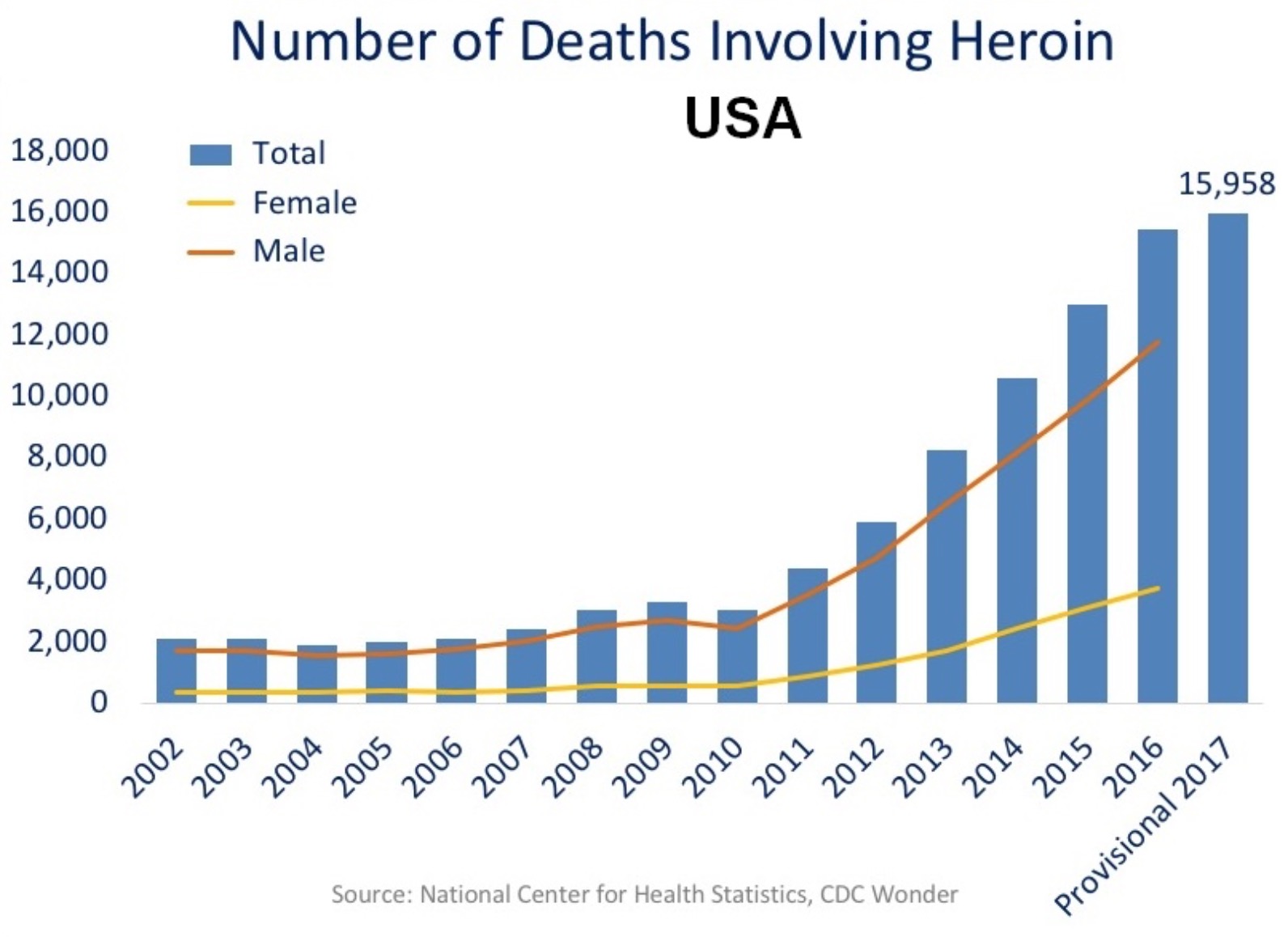It’s no secret that the United States is facing an opioid epidemic and scrambling to find a solution, but the statistics are still staggering. Prescription opioids are the primary trigger of addiction in 80 percent of heroin addicts, and over 130 people die every day from an opioid overdose.
The number of overdose fatalities is rising in the United States, but in 2004, Kentucky implemented a common-sense law, known as Casey’s Law, or the Matthew Casey Wethington Act for Substance Abuse Intervention, that holds the potential for curbing these numbers.
Inspired by Charlotte Wethington’s son, Matthew Casey Wethington, who died of a heroin overdose in 2002, at the age of 23, Casey’s Law allows parents, relatives and friends of someone suffering from alcohol or drug addiction to petition the court for treatment on behalf of that person, no matter their age and without any risk of facing criminal charges.
Although involuntary treatment almost sounds Orwellian, addiction is derived from the Latin word addictus for a reason — meaning to devote, sacrifice or betray, and under Roman law, it meant a person that became enslaved. Getting help for a loved one addicted to drugs is an uphill battle many families feel like they’ll never win, leaving them feeling lost, confused and hopeless, until that loved one becomes a statistic. Although no person suffering from addiction is hopeless, the journey to sobriety is an arduous one, because addiction hijacks the brain and alters it.
Studies show that addiction impacts cognitive function and biases, meaning reason, memory, attention, rationale and judgment are affected in some capacity. The brain is highly adaptable and is constantly changing throughout a person’s lifetime. Its ability to transform itself is known as neuroplasticity and is a necessary trait in order for people to learn, remember and adapt to changing environments.
Neuroplasticity is what allows substances to alter brain chemistry, structure and function, and it is why constant exposure to a substance can cause the brain to require it in order to maintain a new normal.
These changes occur in regions of the brain associated with reward, memory, emotion, decision-making and stress regulation, which is why addiction can be understood as a progression of impulsive behavior to compulsive. Impulsive behavior is when strong urges propel a person to seek out and experience pleasure without any consideration of the consequences — before becoming compulsive.
This stage means that despite the consequences, a person is compelled to do drugs to relieve anxiety or any uncomfortable feelings — basically restoring their new sense of normal — not for any sense of pleasure.
These neurological and emotional changes can explain many behavioral traits associated with addiction, such as mood swings, irrationality and denial: refusing that they have a problem, convinced that they are in control, disregarding all harm that they are doing and even playing the victim while lying, manipulating and blaming others for their problems.
Although denial is accused of being the main roadblock to sobriety, the real obstacle is that addiction impairs rationale by impacting the brain — including the prefrontal cortex that influences planning, reasoning and judgment — so the ability to understand and recognize the problem is diminished. This is what Charlotte faced with her son: not denial of the problem, but his inability to recognize and deal with the problem.
On the Casey’s Law website, Charlotte explains the personal experience that inspired her to take action. “The insurmountable obstacle that we faced with our son, Casey, was that he was 23 years old and had the ‘right’ to choose whether or not he needed treatment,” she explains.
The right to choose got in the way of his recovery. Casey was unable to make a rational decision on his own, but because he was over 18 and wasn’t in the criminal justice system, he was given a choice anyway.
After Casey’s death, Charlotte championed for a law that would allow others to do what she couldn’t: to give their loved one the right to live. Ohio passed Casey’s Law back in 2012, and Renee Portokalis is now pressing for it in her state of Illinois.

Renee’s daughter, Danielle Portokalis, is 24 years old and first started doing drugs in high school. She has gone from marijuana to pills to heroin, and she is now using methamphetamine. Renee says in her petition, which has garnered more than 50,000 signatures, that Danielle has been to 25 rehabs but has never finished treatment, because she’s able to leave whenever she wants. She is now losing all of her teeth, her veins have collapsed and she has liver disease.
Casey’s Law would allow Renee to intervene on Danielle’s behalf, who is unable to recognize her life-threatening condition and need for treatment. If it had already been passed in Illinois, it could have potentially caught onto Danielle’s addiction much earlier and prevented her from transitioning to more hardcore drugs.
Although the petitioner requesting treatment on behalf of an addicted person is still responsible for finding a treatment facility and paying for treatment, implementing Casey’s Law is as simple as filling out a petition form. Once the petition is filed with the county’s circuit clerk, the court reviews the petition and the petitioner is required to take an oath and give a statement.
If the court decides that there is probable cause to proceed, the addicted person is notified and a hearing takes place within two weeks. A physician and another healthcare professional assess the person before the court decides whether or not they have to complete involuntary treatment, which can last for two months or almost a year.
Casey’s Law doesn’t only ensure that someone receives treatment, but that they remain for its entire mandated length. Although there is no set standard of how long rehab should last — because everyone recovers at different speeds — evidence shows that promising results depend heavily on the length of treatment.
Renee is unable to ensure that her daughter sticks to her treatment, and in Charlotte’s case, she was told to wait until her son wanted help, which meant doing nothing until he hit rock bottom. Charlotte says that it is “contrary to the best practices for treatment of any other chronic progressive potentially fatal disease. With other diseases, we know that the sooner the disease is recognized, the longer it’s treated, the better the chances for recovery.”
Addiction is a disease that damages and alters neural structure and function, and the Centers for Disease Control and Prevention report that the number of overdose deaths involving opioids in 2017 was six times higher than in 1999, with more than 700,000 people dying from a drug overdose within that time period.
If the United States wants the number of overdoses and fatalities to fall, addiction must be treated like a disease, and Casey’s Law recognizes this fact by ensuring treatment reaches those that are impaired.
















